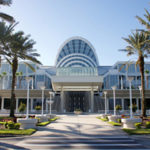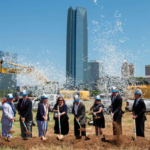 It’s been more than a year since Marriott International completed its $13-billion acquisition of Starwood Hotels & Resorts Worldwide, creating the largest hotel company in the world — encompassing 30 brands, more than 5,700 properties, 1.1 million guest rooms, and a whole lot of meeting and event space.
It’s been more than a year since Marriott International completed its $13-billion acquisition of Starwood Hotels & Resorts Worldwide, creating the largest hotel company in the world — encompassing 30 brands, more than 5,700 properties, 1.1 million guest rooms, and a whole lot of meeting and event space.
What’s life like after the big deal? We checked in with Steve Heitzner, Marriott’s chief sales and marketing officer for the Americas.
What did the acquisition bring to Marriott’s meeting and event clients?
There’s a few different things. I’ll start with our convention and resort network. Prior to the acquisition, we already had the largest portfolio of convention and resort hotels in the industry. With the acquisition of Starwood, we had about 38 Starwood hotels join that network, so we now have 108 hotels as a part of our convention and resort network. That’s a tremendous benefit to meeting planners, because — especially with larger meetings, as many work on a rotational basis — we were able to really bring some new things to the rotations for customers.
Our convention resort network is really working on having a consistent customer promise. For meeting planners, that’s a tremendous benefit that we will be able to have similar systems and processes and offerings across that network. While each hotel has its own unique set of opportunities, there is a base level of things that are important to customers, that, if consistent across the network, makes their jobs a lot easier.
Also, in Canada, we did not have a significant number of big, big hotels. We’ve got two hotels in Toronto that are over 1,000 rooms. Same thing in the Caribbean and Latin America. We didn’t have a presence in Argentina at all for bigger meetings, and Starwood has 12 hotels in Argentina. We now have a presence there that we didn’t have before. That distribution of Marriott hotels has just really, really increased, and it’s a big benefit to customers.
What were some of the concerns you heard about the acquisition from Marriott’s meeting clients?
The big concern was, “Marriott’s now got 30 brands, and are your salespeople going to be familiar with all 30 brands?” That’s one thing that we were very focused on. Early on in our global sales organization, we ensured that we went through a considerable amount of brand training with our salespeople. But what’s really important for our salespeople to understand — and for customers to understand — is there’s not very many customers out there that use all 30 brands. What was important for our salespeople to know was, what’s important to this customer? It’s likely that this customer is going to use five or six brands.
I think that customers were also concerned that, “Marriott’s going to have this huge distribution and there are markets where there’s going to be a significant amount of the share going to be Marriott. What does that mean to us?” I think the benefit there is that when you go to a particular market, we’re going to have a multitude of brands available to customers at a multitude of price points.
Let’s flip the table around. How did you make sure that Starwood’s longtime meeting clients felt welcome within Marriott?
Because of the structure of our sales organization, we’ve been able to give customers a primary point of contact. For those customers that were loyal to Starwood, we’ve been able to give them a salesperson to be their primary point of contact across the entire network and to be able to help them navigate the new world.
I think the most important thing that we could do for customers that were Starwood-specific before is to introduce them to the broad portfolio of brands and let them know the opportunities that they have gained because of this acquisition. We ensured that our salespeople were reaching out to these customers, making sure that, if they didn’t already have a relationship, they would build that relationship, because that’s clearly one of the most important things that we could do — make sure that every one of our customers knows who their go-to person is in this new company.
What have been the challenges of this whole process for you and your team?
I think the challenges are not necessarily unique to any kind of an acquisition; we’re all running on different systems, right? You have legacy Marriott hotels running on one set of systems and you’ve got SPG hotels running on another set of systems. We’re still working through the systems’ integration; that contines to be a big focus for us in 2018. That is going to make things better for all of our associates internally, as well as for all of our customers.
Then, organizationally making sure that we’ve got complete alignment within the company, and I think that’s something that has been really successful early on. Whether it was in the global sales organization or in the hotels in the field, getting leaders together so that they could meet each other, build relationships, and be able to work together for the benefit of the customer.
This is a people business, and I think that one of the most challenging things and one of the most rewarding things we could do as a part of this acquisition is to ensure that we are all striving to build a really great culture with this new company. Both companies had very strong cultures, and being able to take the best of both is something that has been a challenge, but something that we’ve made a lot of progress on and is now our biggest advantage.



